What Happens Next: A Roadmap to Life, Work, and Society after Coronavirus

Since January of 2020, the world has been watching the unfolding of the Covid-19 pandemic. It started with a few isolated cases in regions of the world that seemed far away. With relentless transmission, cases started to jump around the world. The infection has now reached just about every community on the planet leading to a current state of health crisis and economic uncertainty.
We also collectively feel that this period, as with other pandemics, is temporary. The amount of time this state will go on for depends on policy decisions on how much the “Curve is Flattened” and how long it takes us to get our bearings, as well as how effectively we can switch to a new normal. However, to fully understand what is happening, we must realize that the behaviors and mindsets of our society will also be changing through these phases.
Our Mindsets and Behaviors are Changing:
We will face many adversities related to the pandemic. For some of these adversities, we will learn to adapt our behaviors and will learn to cope with them in ways that are positive and effective. Many of those positively adapted new solutions will continue to exist even after the crisis is over. For example, we might learn to accept social distancing techniques as a positive feature in society. In the future, instead of asking “why meet over video?”, people may ask, “why do we need to meet in person?”
Yet, during this process, we will also have pains and scars from the things that did not go well. As a society, these pains may come from bad experiences relating to healthcare, job loss, or food shortage. Later, after the crisis has resolved, we will seek to distance ourselves from these types of pains. For example, individuals who lived through the Great Depression of the early 1900s became more careful with money through the rest of their lives. At a government and policy level, this period led to the introduction of welfare, a safety net intended to stop people from falling into poverty. Similarly, our society is likely to make corrections in policy to stop these types of pains from happening again.
Through the Crisis, We May be Able to See a Glimpse of the Future:
If we review recent articles and literature, we can predict many potential mindsets and behaviors that will endure after the current crisis is solved. And further, the greater the pain that we suffer from this period, then the stronger these mindsets and behaviors will be:
Current Condition and Expected Lasting Behavior or Mindset
Current Condition: We are experiencing more damage to our communities from disease than from conflicts with other countries. All nations are suffering, and everyone has the same problem.
Expected Mindset/Behavior: We will believe that we are in a new war with disease and future pandemics instead of in a conflict with other countries.
Current Condition: The frontline soldiers of the war are doctors, nurses, healthcare staff, and other medical experts. The people we count on the most to ensure safety in the current health crisis are healthcare workers.
Expected Mindset/Behavior: The new patriotism will support health in our communities.
Current Condition: Social distance is socially acceptable (and often expected).
Expected Mindset/Behavior: Many social activities like concerts will become streamed services. This means it will be acceptable and preferred that smaller groups of friends participate socially without being in larger crowds.
Current Condition: We are learning how to make social distance productive and efficient for many job functions via telecommuting.
Expected Mindset/Behavior: We see an emergence of a ‘work at home economy’. In this model, a person in any part of the world including the first world can provide meaningful personalized contributions to any other part of the world with video and internet tools.
Current Condition: Unlike global warming, the effects of this pandemic are happening quickly. The predictions and solutions of scientists and medical experts can be quickly seen by the general public.
Expected Mindset/Behavior: Science becomes real to a population that has started to doubt its accuracy. Compared with charismatic people who can make others feel good, real experts will have increasingly higher societal value.
Current Condition: Reductions in CDC funding, fewer pandemic safeguards, lighter healthcare infrastructure, and less protective government programs are leaving the population vulnerable to this crisis.
Expected Mindset/Behavior: Government will be expected to invest and develop infrastructure and science that cares for the population.
Current Condition: Fake news and misinformation over social media leads to harmful behaviors.
Expected Mindset/Behavior: Social media remains valuable, but policies and solutions to eliminate unverified information will be socially and politically desired.
Current Condition: Internet communication provided by telecommunication firms proves to be invaluable for continuing to function while maintaining social distance.
Expected Mindset/Behavior: The Internet will become an increasingly critical utility. The demand for reliable, higher quality internet connections accelerates.
Current Condition: We will encounter negative experiences with a disrupted supply chain.
Expected Mindset/Behavior: Society will demand a reliable supply chain that is balanced with global and local options from manufacture to doorstep.
Current Condition: We experience pains from an over-run medical system which was never designed to deal with a pandemic.
Expected Mindset/Behavior: The healthcare system will be stress tested and reconfigured. The new system will be able to separate communicable disease patients from others, offer medical SWAT, and may even include options for military support.
Current Condition: We are learning to avoid touching shared objects.
Expected Mindset/Behavior: New models of touch-less interaction will become a standard. Examples include payments without signing, eliminations of door handles, touch-less faucets, and etc.
Current Condition: We have observed at least one dangerous virus transferred to humans from an animal which was intended to be eaten as meat.
Expected Mindset/Behavior: Policy makers will consider increasing plant-based meats and other plant-based foods.
The Roadmap to What Comes Next:
Regardless of how long it takes to both adapt and move past our current pandemic crisis, the following stages are likely to occur.
- Chaos and breakdown of infrastructure and societal functions
- Stabilization of supply chains, basic services, and money flow
- Correction through new policies and new opportunities for a better world
Given the changes in mindset and behavior that are currently underway, we will review each stage listed above below to understand what is likely to happen next.
Stage 1: Chaos and Breakdown:
We are currently in a state of chaotic disruption. Society has been gripped in a fear of catching a virus that can bring pain, suffering, and even death to family members. Social distance has so far been our strongest tool and it is being practiced widely by those who are concerned and educated about the options.
As a result, many business and leisure activities ranging from dining in restaurants to business travel are no longer possible. Due to a mixture of social distance and fear, the economy has stalled. Money flow has reduced to low point, a recession has begun, and job layoffs have started.
And during this phase, two things are happening in parallel:
- Coping and Adaptation: Everyone is doing what they can, given constraints of social distance, uncertainty, fear, and economic fallout. For example, we have learned to conduct meetings, classes, and social events over Zoom. We have changed many social behaviors to accommodate this new reality. Everyone is basically coping with the situation.
- Societal Disruption: On the other hand, our basic infrastructure such as supply chains for food and medicine, are being disrupted, at least temporarily. Supermarkets shelves have been emptied and even Amazon delivery times have started to slow down. This is partly due to new stresses on the supply chain and lack of resources due to the health conditions. However, this is also due in part to bad behaviors such as hoarding which has increased recently as a consequence of the current environment.
Stage 2: Stabilization for Basic Needs and Money Flows:
In the Stabilization phase, we will begin to put the pieces of society and the economy back together, even in the face of an ongoing pandemic. The trigger for this phase depends on the time needed for people to accept the situation and then move on to focus on the necessary issues.
It is important that this period of chaos and uncertainty does not last too long. If it takes too long, then a social order may collapse. Civilization can literally break down into lawlessness. Managing the crisis itself is critical so that stabilization can begin.
As we focus on stabilization, in this particular case, we cas.
- Industries like restaurant, retail will have to find more ways to adapt to demand for "takeout"
- Some firms will introduce “pay-while-sick plans”. Various technologies, masks, or sanitization systems may be used to support worker health.
- Supply chain operators may also start to select people who have the least vulnerability for service-based jobs within this industry.
- New supply chains will start to be created with greater regional control.
Work from Home: Beyond the supply chain, we imagine that a ‘Work at Home Economy” may start to develop in this phase.
- Many job functions will be successfully accomplished with very limited live interactions. In some cases, efficiency and/or quality will improve when people learn to use new communication tools.
- Education models have also begun to change. Students are finding that some aspects of distance learning are more effective. Universities have been leaning how to cater to geographically audiences who cannot attend in person.
Family Circles/Small Circles: A third aspect of the stabilization phase is the resurgence of the family circle. Many people will spend more and more time sheltering with family members who live with them. This circle would be considered a safe set of people, meanwhile friends outside the horse may become less safe from a health perspective. The closeness and partial isolation will also cause new mental stresses. As a result, there will be more challenges and also more opportunities to make the family circle experience better in the near future.
Government: On a government level, we are likely to see an increased amount of mail-in voting. We may also predict policy requests to allow Medicare billing for telemedicine. We may even see the possibility of virtual legislation, where all lawmakers do not need to be in one place at the same time.
Stage 3: Corrections and New Growth
Timing of the Correction Phase:
Once stabilization has occurred, the focus will move to fixing the policies that allowed the previous crisis to occur. If the crisis is prolonged or more painful, then the urge to correct will also be stronger.
In this particular case, the timing will depend on how long it takes for people to again feel safe to live and work in the environment. Four possible scenarios are:
- A vaccine becomes available – predicted to be around 18 months
- A therapeutic is identified which reduces mortality rate by 10X and/or removes the requirement for hospitalization for most cases – could be in the next 4-6 months
- The virus infects enough of the population that a population’s immunity is achieved. The timing of this depends on how strongly the curve is flattened with social distance.
- After 6-8 weeks of social distance and assuming widespread testing, we may be able to have cases well identified and controlled in a manner that is not harmful to the broader population – assume 2 to 4 months.
In our own scenario planning at UC Berkeley, we are working with a timeline that the “Corrections phase” will start either early July 2020, Late August 2020, or January 2021. These dates are based on semester boundaries at Berkeley which are not related to the policies. Rather, these dates are forcing functions to make our own decisions.
What Corrections Can We Expect:
Nevertheless, regardless of when the Corrections phase begins, we foresee the following effects in work, life, and society:
- Continued growth acceleration in telecom, internet, video conferencing
- Investment to redesign supply chains for resilience and global/local balance.
- Restructuring of the healthcare system to handle infectious disease
- Policies, processes, and technologies to reduce or at least mark unverified, fake information on the Internet
- Requests for government to orchestrate research and new programs in areas for public health and safety that would otherwise not be profitable for corporations
- Research in personalized medicine may play an even bigger role due to the memory of the Covid-19 pandemic. In this case, the virus affected people in very different ways. Many are even asymptomatic while others cannot survive. This will be a strong case for developing medicines based on the genetics or other factors of a particular person.
- Opportunities for new ventures that support social distance and health safeguards
- There may be a renewed focus on self sufficiency and living off the grid
- This is a period which can boost the needs for virtual reality and digital transformation. While Internet infrastructure will continue to grow, there will be greater needs for greater non-verbal communication over digital channels.
Summary:
As we move through the process of this pandemic, our mindset and behaviors have already started to change. These mindsets and behaviors will be formed by the methods of our adaptation to this adverse situation. They will also be reinforced by the pains we encounter during this crisis. After we stabilize basic services, we will likely change our targets for innovation and policy. From this logic, we can begin to see a glimpse of one possible future.
Works Cited
“Coronavirus Will Change the World Permanently. Here's How.” POLITICO
Curran, "Coronavirus Will Change How We Shop, Travel and Work for Years, Bloomberg", 3/14/2020
Fortwengel, Johann. “Coronavirus: Three Ways the Crisis May Permanently Change Our Lives.” The Conversation, 22 Mar. 2020, theconversation.com/coronavirus-three-ways-the-crisis-may-permanently-change-our-lives-133954.
Sidhu, Kira. “How the Coronavirus Crisis Might Change The Way We Live Our Lives Forever, Ideas and Notes Pulled From Background Research”, March 27, 2020.



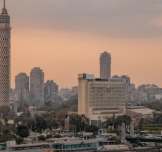
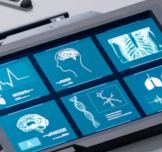







































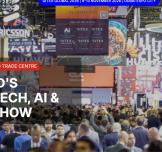
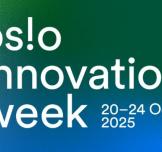






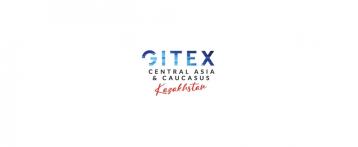

















EgyptInnovate site is not responsible for the content of the comments